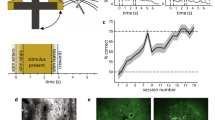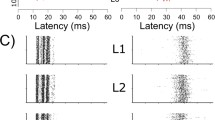Abstract.
Stimulus representation is a functional interpretation of early sensory cortices. Early sensory cortices are subject to stimulus-induced modifications. Common models for stimulus-induced learning within topographic representations are based on the stimuli's spatial structure and probability distribution. Furthermore, we argue that average temporal stimulus distances reflect the stimuli's relatedness. As topographic representations reflect the stimuli's relatedness, the temporal structure of incoming stimuli is important for the learning in cortical maps. Motivated by recent neurobiological findings, we present an approach of cortical self-organization that additionally takes temporal stimulus aspects into account. The proposed model transforms average interstimulus intervals into representational distances. Thereby, neural topography is related to stimulus dynamics. This offers a new time-based interpretation of cortical maps. Our approach is based on a wave-like spread of cortical activity. Interactions between dynamics and feedforward activations lead to shifts of neural activity. The psychophysical saltation phenomenon may represent an analogue to the shifts proposed here. With regard to cortical plasticity, we offer an explanation for neurobiological findings that other models cannot explain. Moreover, we predict cortical reorganizations under new experimental, spatiotemporal conditions. With regard to psychophysics, we relate the saltation phenomenon to dynamics and interaction in early sensory cortices and predict further effects in the perception of spatiotemporal stimuli.
Similar content being viewed by others
Author information
Authors and Affiliations
Additional information
Received: 17 March 1999 / Accepted in revised form: 10 August 1999
Rights and permissions
About this article
Cite this article
Wiemer, J., Spengler, F., Joublin, F. et al. Learning cortical topography from spatiotemporal stimuli. Biol Cybern 82, 173–187 (2000). https://doi.org/10.1007/s004220050017
Issue Date:
DOI: https://doi.org/10.1007/s004220050017




